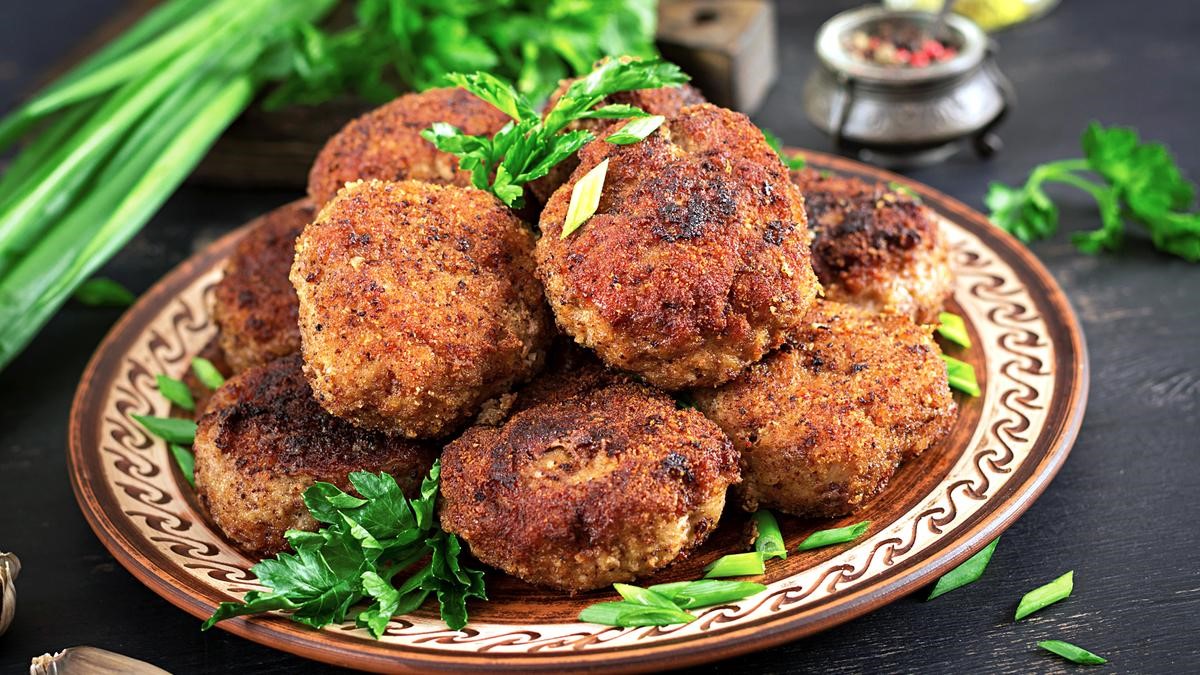Description

Source: Hindu
Disclaimer: Copyright infringement not intended.
Context
- The browning of food, such as meat, cakes, bread, and vegetables, occurs primarily due to a chemical process called the Maillard reaction.
Details
- Named after French scientist Louis-Camille Maillard, the Maillard reaction occurs when amino acids (building blocks of proteins) and sugars are heated together.
- It's a non-enzymatic browning process, meaning it happens without the involvement of enzymes.
Chemical Process
- The Maillard reaction begins when a reducing sugar, such as glucose or fructose, reacts with an amino group from amino acids, peptides, or proteins.
- When heated, sugars and proteins undergo a condensation reaction, forming an unstable compound called a Schiff base.
- This Schiff base undergoes rearrangement and dehydration, leading to the formation of various intermediate compounds.
- These intermediates react further to produce flavor compounds and characteristic aromas in the food.
- Some intermediates undergo rearrangement, creating more stable products, which are precursors for melanoidins.
- Melanoidins are nitrogen-containing compounds responsible for the brown coloration of food.
- They form through condensation and polymerization of intermediate compounds produced during the Maillard reaction.
Factors Influencing the Maillard Reaction:
- Temperature: The rate of the Maillard reaction increases with higher temperatures, but excessively high temperatures can lead to burning and bitter flavors.
- Acidity: Acidic conditions can inhibit the Maillard reaction, while alkaline conditions may accelerate it.
- Moisture Content: The presence of water is necessary for the Maillard reaction to occur, but excessive moisture can slow it down.
- Types and Concentrations of Proteins and Sugars: Different proteins and sugars react at varying rates, influencing the extent of browning.
- Presence of Catalysts: Certain metal ions, such as copper and iron, can act as catalysts and accelerate the Maillard reaction.

Ideal Conditions for Maillard Reaction:
- Research suggests that temperatures between 110°C and 170°C are optimal for the Maillard reaction.
- Higher temperatures accelerate the reaction, while acidic conditions and excess moisture can inhibit it.
- Dry foods, like bread crusts, can develop deep brown colors during baking due to the absence of moisture.
Products of the Maillard Reaction:
- Melanoidins: High molecular weight brown polymers responsible for the characteristic color of roasted and baked foods.
- Aromatic Compounds: A diverse range of volatile compounds, including pyrazines, thiols, and furans, contribute to the flavor and aroma of cooked foods.
- Heterocyclic Compounds: Compounds such as furfurals and pyrroles contribute to the complex flavor profile of foods undergoing the Maillard reaction.
- Acrylamide: Under certain conditions, the Maillard reaction can lead to the formation of acrylamide, a potentially carcinogenic compound found in fried and baked foods.
Implications:
- Flavor Enhancement: The Maillard reaction is essential for the development of desirable flavors and aromas in cooked foods, contributing to their overall palatability.
- Color Development: Browning of foods through the Maillard reaction enhances their visual appeal and is often associated with caramelization.
- Nutritional Implications: While the Maillard reaction enhances the sensory properties of foods, it can also lead to the formation of potentially harmful compounds, such as acrylamide and advanced glycation end-products (AGEs), which have been implicated in various health concerns.
Sources:
Hindu
|
PRACTICE QUESTION
Q. The Maillard reaction is a chemical process that plays a crucial role in the development of flavor, aroma, and color in a wide range of cooked foods. Elaborate. (150 words)
|











